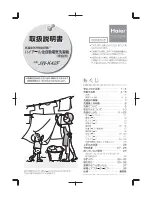
en
23
Installation
The dishwasher must be connected by
a qualified technician to ensure correct
operation. The specifications for supply,
drainage and connected load must fulfil
the required criteria as stated in the
following paragraphs or in the installation
instructions.
Install the appliance in the following
sequence:
– Check the delivery
– Install the appliance
– Connect the waste water
– Connect the fresh water
– Connect the power supply
Delivery
Your dishwasher was checked at the
factory to ensure that it was in perfect
working order. This may have left some
small water stains in the dishwasher.
These will disappear after the first rinse
cycle.
Installation
The required installation dimensions can
be found in the installation instructions.
Using the height-adjustable feet, adjust the
appliance until it is level. Ensure that the
appliance is standing firmly.
Waste water connection
See the installation instructions for the
required connection steps. If required,
attach a siphon with drainage spigot.
Using the enclosed parts, connect the
waste water hose to the drainage spigot
of the siphon.
Ensure that the drainage hose is not
kinked, crushed or twisted (ensure that
there is no sealing cover which prevents
the waster water from flowing away!).
Fresh water connection
Using the enclosed parts, connect the
fresh water connection to the tap
according to the installation instructions.
Ensure that the fresh water connection is
not kinked, crushed or twisted.
When replacing the appliance, always
connect a new water supply hose to the
water supply. The old supply hose must
not be re-used.
Ensure that the fresh water connection is
not kinked, crushed or twisted.
Water pressure:
Minimum 0,5 bar – maximum 10 bar.
If the water pressure is higher, install a
pressure reducing valve.
Flow rate:
Minimum of 10 litres per minute.
Water temperature:
We recommend that you use cold water.
If you do use hot water, the temperature
should not exceed 60
°
C.
Electrical connection
This appliance should only be connected
to a 230/240 V AC source via a properly
installed earthed socket. See nameplate
31
for size of required fuse.
The socket must be installed close to the
dishwasher.
If the domestic wiring includes a residual-
current-operated (FI) circuit-breaker, make
sure that it bears the
mark, as only
this type conforms to the latest regulations
Disconnecting the dishwasher
Here too, it is important that tasks are
carried out in the correct sequence:
always unplug the appliance from the
mains electricity first of all.
Pull plug out of wall socket.
Turn off water supply.
Disconnect drain and water input hoses.
Remove screws in underside of work
surface. Detach base board, if fitted.
Pull out appliance and carefully withdraw
hoses at same time.




































